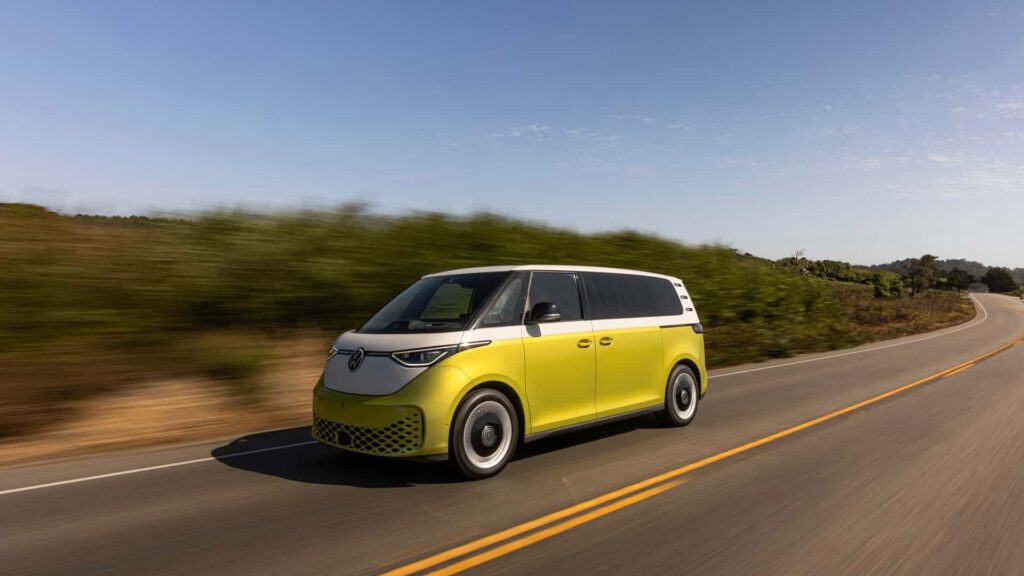- The ID. Buzz has been criticized for having poor range, with only 234 miles of EPA range in its most efficient configuration.
- The good news is that it appears to beat its EPA range in Edmunds range testing, which is conducted using a mix of city and highway driving.
- You’ll have to wait until our 70-mph range test to find out if it can hold up to road trip speeds, though.
I wasn’t too impressed by the Volkswagen ID. Buzz. I loved the design, but I couldn’t quite figure out who it was for. Every minivan owner I know does a lot of road trips, and with a 231-mile EPA rating in mixed city/highway driving, the all-wheel-drive version didn’t look up to the task. The rear-wheel-drive version was barely better, with 234 miles of range. But based on new testing from Edmunds, VW may be understating things.
Edmunds runs an efficiency loop that tries to re-create the EPA driving cycle. Part of why many cars “underperform” their stated ranges when tested solely on the highway is because the EPA range figure isn’t a highway number. It’s based on a mix of 55% city driving, 45% highway driving. But unlike gasoline cars, EVs are far more efficient in the city than they are in the highway.
EVs don’t waste fuel idling, don’t mind working from a stop and don’t lose nearly as much energy braking, as they have regenerative braking systems that recapture their kinetic energy. But since electric motors are so efficient and have so few other efficiency losses, air resistance has a greater affect on range. Since resistance increases exponentially with speed, highway driving at 70 mph is a worst-case scenario for an EV, which would rather putter around town at 25 mph.
Automakers don’t like it when customers feel short-changed by real-world range that doesn’t live up to the advertised number. Many, therefore, try to make sure their numbers remain realistic on the highway, or when it’s cold. The Germans are famous for this, which is why the Porsche Taycan always over-performs on our highway range tests. Now, we have our first bit of evidence that the ID. Buzz could be similar.
The all-wheel-drive version did 263 miles on Edmunds’ test loop, beating its 231-mile range estimate by 32 miles. That’s a good sign, though frankly I’m not sure it changes my contention that the ID. Buzz will be a poor fit for road trips. First, I expect that number to be considerably lower for a highway-only trip. Highway time is particularly punishing to big, blocky EVs like the Buzz, and so I’m doubtful that the Buzz can considerably beat its 231-mile range on the highway. It’s also worth noting that this test was done unladen in Southern California, and therefore represents a best-case scenario.
Finally, you’re not going to run your EV to 0%, and you’re not likely to charge much beyond 80%. Which means your real world range between 26-minute stops—after an initial long stint, assuming you start with a full battery—will be between 161 and 185 miles, depending on if you go off the EPA or the Edmunds figure. That assumes warm weather and no significant payload. For $70,000 or more, I think the average minivan buyer is going to expect more.
That’s ok. This isn’t a product designed to replace the minivan. It’s a cool halo product that’ll sell on its design. For those willing to accept its range and price, there’s at least good news. At least in mixed driving, the ID. Buzz can beat its range figure. To find out how it does on the highway, you’ll have to wait for our 70-mph range test.
Contact the author: Mack.Hogan@insideevs.com.

